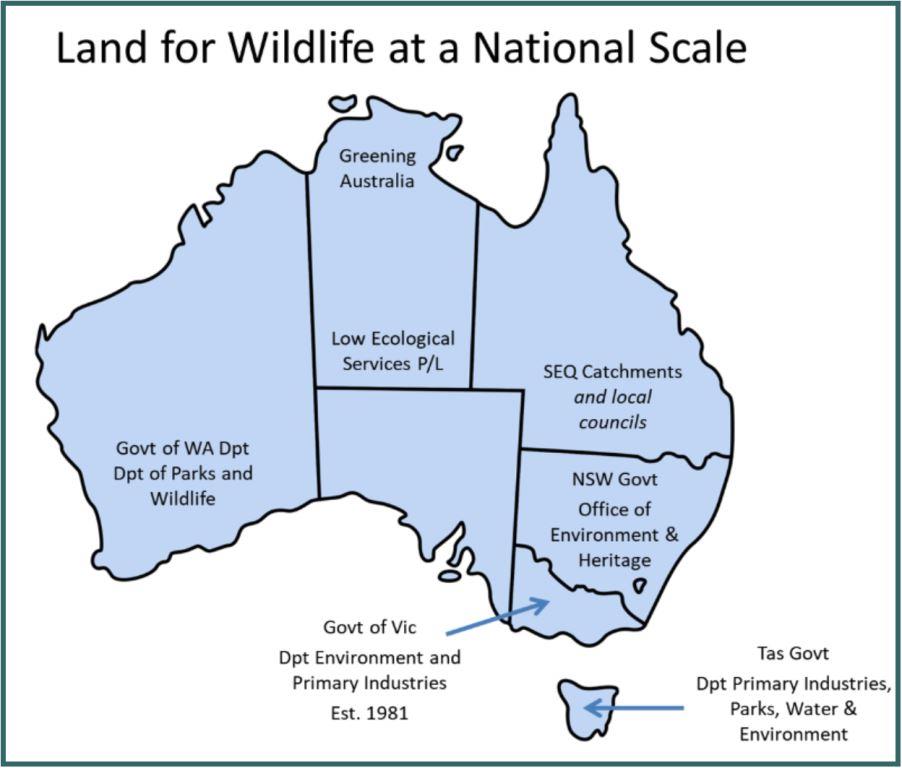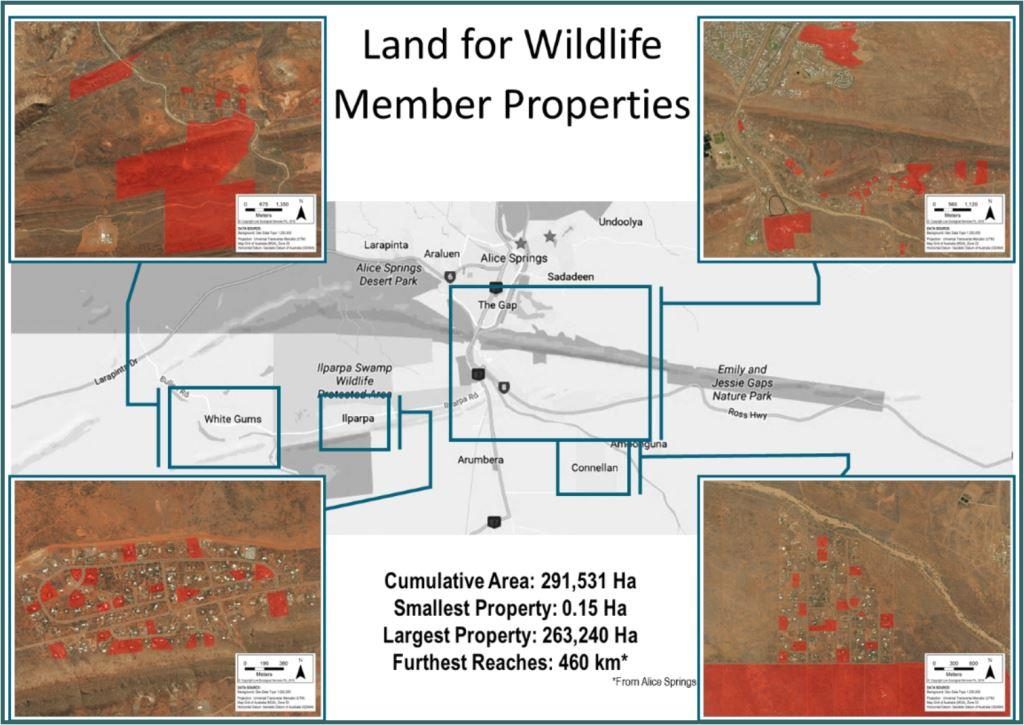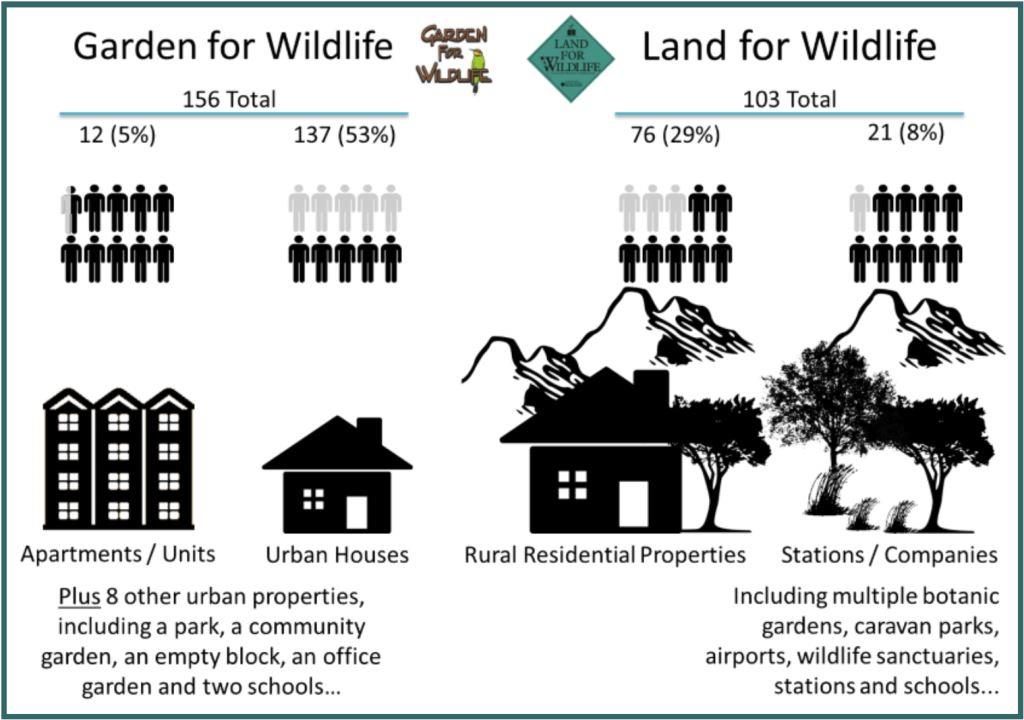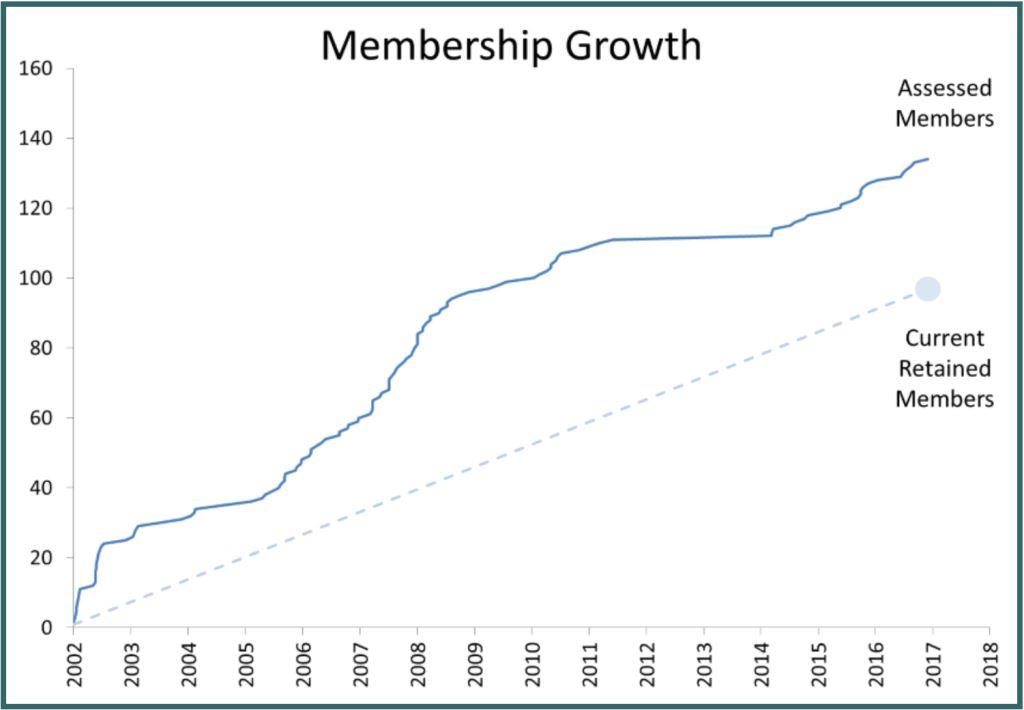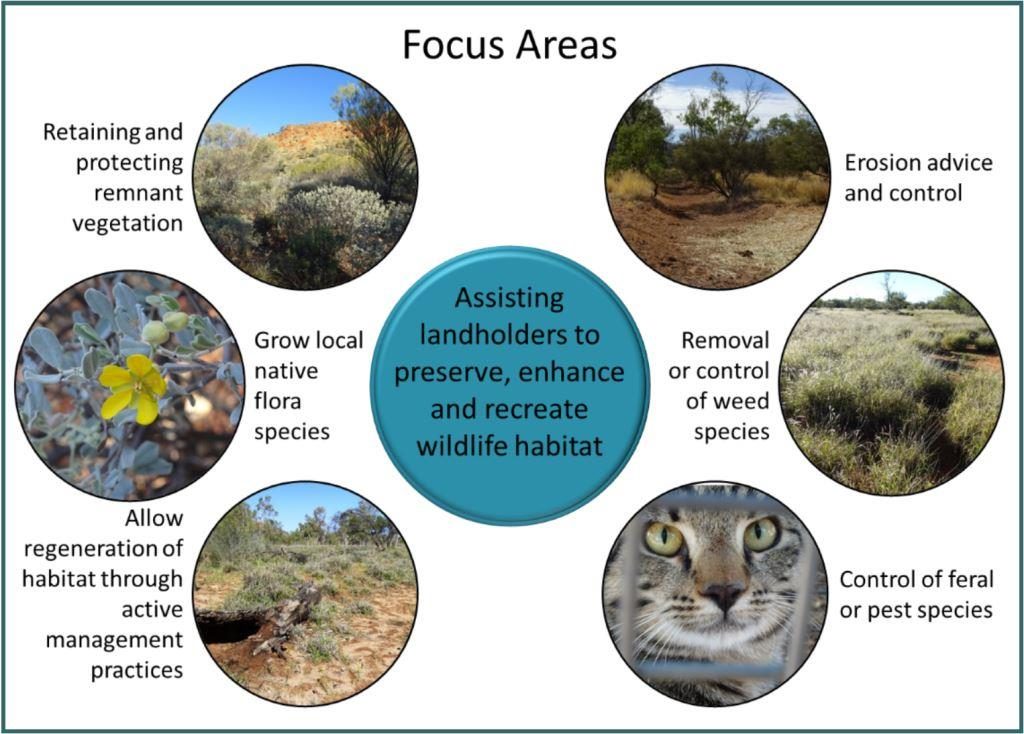Land for Wildlife and Garden for Wildlife Central Australia: Celebrating 15 years of Wildlife Habitat Preservation, Enhancement and Restoration
Land for Wildlife is celebrating 15 years of the program in central Australia, and Garden for Wildlife is celebrating 10 years of the program! We hope that the two complementary programs have been beneficial to our members and we look forward to continuing to support local landholders to preserve, enhance and restore wildlife habitat on private properties in the years to come.
Thanks to our host Low Ecological Services and current funding partners (Northern Territory Parks and Wildlife, Alice Springs Town Council, Territory NRM), as well as those that have funded and supported us in the past (so many!). We couldn’t have done it without you!
Many thanks to all Land for Wildlife coordinators past and present for building the program up to be what it is and providing expert assistance to landholders throughout central Australia. Thanks also go to the local organisations and groups that have supported us over the years to get the word out and assist us with the program at large.
Land for Wildlife celebrated the occasion with an event at the end of September, held at Olive Pink Botanic Garden (a long standing LFW member themselves who were gracious to provide assistance with the event venue). The event was very successful with roughly 35 LFW and GFW members in attendance for a range of great workshops and presentations. Presentations included a summary of the program, a property planning for wildlife presentation, an NT register of significant trees update, a seed collection workshop by Charles Darwin University, a bat box building workshop by Parks and Wildlife Commission NT, and a documentary Wild Brumby Run. The event included catering for morning tea, as well as lunch, provided by the Land for Wildlife team.
Thanks to Territory Natural Resource Management for supporting the event through funding from the Australian Government’s National Landcare Programme. In addition, Olive Pink Botanic Garden provided in kind support towards the fabulous venue. Local groups provided door prizes as in kind support, including books from Land for Wildlife, two vouchers from Red Kangaroo Books and two vouchers from Alice Springs Desert Park. The lucky recipients were drawn at random from those present—we hope that the vouchers and books are well received (they are certainly well deserved!).
There has been some excellent feedback from the event, with many of the attendees showing great appreciation for the informative workshops and a chance to mingle with other members. As part of the 15th birthday event, we provided some background and a summary on the Land for Wildlife and Garden for Wildlife program in central Australia (presented below).
____
Land for Wildlife is a not-for-profit program that runs in various capacities throughout Australia. Land for Wildlife is aimed at assisting landholders in peri-urban and rural areas to preserve, enhance and recreate wildlife habitat. A parallel program, Garden for Wildlife, was developed in the biodiverse hotspot Alice Springs to assist members residing on urban blocks. The programs rely on voluntary and non-legally binding efforts from local landholders.
Land for Wildlife as a brand was established in 1981 by the Victorian government and Bird Observer’s Club of Australia. Land for Wildlife in Alice Springs and its partner program Garden for Wildlife have been running successfully for fifteen years, and ten years, respectively. They have been hugely successful programs and are widely regarded in the Alice Springs region. The program was initially run through the Alice Springs Town Council on a three year federal government grant. The Alice Springs Town Council ran it for a year, with Low Ecological Services taking up the remainder of the contract and hosting the program ever since and seeking grant moneys from a variety of agencies. The program is currently funded locally through Parks and Wildlife NT and the Alice Springs Town Council remains a sponsor. The program also has funding for individual projects through support from Territory Natural Resource Management and funding from the Australian Government’s National Landcare programme. Additional previous funding bodies include Territory Eco-Link, Territory Natural Resource Management, Caring for Country, Landcare, Natural Heritage Trust, Envirofund, PowerWater and Low Ecological Services with in kind support and endurance.
Many of the member properties are situated within the MacDonnell Ranges Bioregion, containing the highest number of vulnerable and rare species listed with conservation status nationally and at the NT level. As a result, preserving even small patches of vegetation is a worthwhile venture in terms of providing habitat for native fauna species (and protecting the local native flora species themselves).
The member base extends to Yulara in the south-west, Andado Station and Ross River in the south-east, Narwietooma Station to the north-west and Tennant Creek Airport to the north. Cumulative property area covered by the 103 Land for Wildlife and 156 Garden for Wildlife members is 291,531 hectares, and rising.
Collaboration with private landholders is a successful method of conserving habitats and nature corridors, to address the challenge of species decline though habitat loss. This is achieved through regular engagement activities (workshops, participation in public events and monthly newsletters), providing networking opportunities, as well as providing on-going support and management advice specific to each block.
When signing up a new Land for Wildlife member, an assessment is conducted on the property, which includes identifying the flora and checking for tracks or scats of fauna, as well as identifying special value habitats and any management issues the property may have. An assessment report is then prepared for the property owner, which includes detailed information about the assessment, property management concerns and suggested methods for going forward. Ongoing assistance in the form of support, advice, information resources and links to other professionals and specialist organisations in the region is provided. Garden for Wildlife is more informal and membership does not include an assessment or report, but rather a resource package and informal site visit to assist with development planning, any queries and plant identification.
Attention in both programs is given to encouraging landholders to plant local native plant species, as these species are self-reliant and there is a subsequent reduction in water use in our water-limited semi-arid zone. Retaining and protecting remnant vegetation is recommended to members. To allow regeneration of habitat, members are advised to fence areas from livestock and restrict the access of livestock to ephemeral rivers and drainage systems. Encouraging distribution of run-off and controlling erosion is oft-needed advice. Members are encouraged to control weed and feral species, such as removal of Buffel Grass (Cenchrus ciliaris) to allow room for native grasses, and trapping feral cats (Felis catus) to limit the predation pressure on native mammals and reptiles. Protecting various elements of wildlife habitat, such as fallen wood, leaf litter and dead branches and trees with hollows are also encouraged.
While the programs have been successful for many long-term members, Alice Springs has a notoriously transient population. While this has benefits in people taking ‘the message’ with them to other regions, it also makes maintaining contact with member properties and their current owners an ongoing challenge. This challenge has been overcome through a combination of efforts, such as the use of MailChimp as an online newsletter mailing tool – bouncing emails promote impetus to contact members to clarify their current status, regular interaction with members to stay up to date with their conservation efforts and the encouragement of communication through the monthly newsletter. The small community of Alice Springs has the benefit that networking with members through chance meetings around town is a useful tool.
As well as the transient membership, the coordinator position has been run by many energetic and qualified specialists over the period of the program in central Australia. While this can be a challenge for members with respect to different levels of engagement, each coordinator comes with a different focus, drive and experience – which can be a benefit in that the information and energy is kept fresh. A potential benefit for incoming coordinators and for LFW members is the amazing expertise and experience available amongst the LfW landholders and their willingness to share that expertise.
Land for Wildlife has been incredibly successful and is a much-loved program in the region. One of the major avenues of communicating with and engaging members and the wider community is through the monthly newsletter and social media posts. Newsletters contain relevant and current information on hot topics, which members can use to manage their properties. The newsletter also provides opportunities for members to share their experience and wildlife snapshots with other members. The website blog and social media platforms such as Facebook, Twitter and Instagram, give multi-media savvy members avenues of staying engaged with Land for Wildlife on a more regular basis between newsletters – whether it be through the posting of a photo from a member, sharing upcoming events, or posting an article relevant to the day. It also gives Land for Wildlife members the ability to interact as much or as little as they wish, without intensive moderation from the coordinator. Social media followers are steadily increasing with regular interaction. Social media also enables Land for Wildlife to engage with people that are outside of the membership network – the Alice Springs community, Australia and internationally.
Land for Wildlife collaborates with many government agencies, which provides a conduit to gain and pass on information – such as PowerWater for water conservation, Department of Land and Resource Management for weed management and erosion control information, and Parks and Wildlife for flora and fauna information. The experience of the LfW coordinators and the networks provided by the role means that the coordinator is able to handle a wide variety of issues.
Engagement with the youth of Alice Springs occurs through a range of community events, with the DesertSmart EcoFair providing one very useful lead. Land for Wildlife ran a ‘Biodiversity’ workshop to four school groups at this year’s EcoFair, with positive feedback coming from all involved. Exposure is gained from our involvement in other community events such as the Olive Pink Botanic Garden Plant Sales, EcoFair markets, Pets on Parade, Alice Springs Show and Mini Bilby Festival.
Collaboration with the Tjuwanpa Women Rangers and the Ntaria Junior Rangers on a regular basis has resulted in the development of a good working relationship with the indigenous communities in the West MacDonnell Ranges, as well as cross-cultural information transferral regarding important NRM issues of the region.
The land assessments give the property owners knowledge regarding the flora present on their block. Many members find plant identification a challenge and are hesitant to do extensive weed control at the risk of removing natives. With a little guidance regarding plant identification, members are much more willing to get active in the garden removing the pesky species, resulting in a healthy garden full of local natives. Land for Wildlife encourages nurseries to provide local native plants and encourages the nursery association to assist in spreading the word, but maintaining those connections is always a challenge due to the transient nature of Alice Springs.
Several properties are now Buffel grass free and only require minimal maintenance to keep the Buffel at bay, and some property owners have even made their way out onto the verge to clear the buffel. Consequently, many native forbs and flowering annuals have returned, providing fruit, seed and foraging vegetation cover for native birds and other fauna.
Erosion control and education has been a priority, which has been extremely helpful for members and other residents in the rural area of Ilparpa.
A long-term success on central Australian Land for Wildlife properties has been the ongoing trapping support given to members for feral animals such as cats, rabbits and spotted turtle doves. Members can borrow traps and get the information resources necessary to assist them in their trapping journey.
In the last couple of years, Land for Wildlife has been running a domestic cat monitoring project in Alice Springs. This is supported by Territory Natural Resource Management, through funding from the Australian Government’s National Landcare Programme. The project focuses on engaging domestic cat owners regarding responsible pet management by tracking the movements of pet cats with a GPS tracker. The project has been picked up by the local media on several occasions and has gained a huge amount of interest in the community.
The NT Register of Significant Trees was conceived in 1982 by the National Trust and Greening Australia and is now management by Land for Wildlife central Australia. It includes central Australia, Katherine and the Darwin region. Candice Appleby has been working hard to revitalise the register and convert it to an online format.
Land for Wildlife/Garden for Wildlife has won many awards over the years, including: Best Urban NRM Group (TNRM Awards 2015 and 2016), Toshiba Leading Information Award Community Group (NT Landcare Awards 2011), Community Award (Melaleuca Awards 2010), Urban Landcare Award (NT Landcare Awards 2009), and Merit Award (NT Landcare Awards 2007).
Our success has come from a combination of all efforts that have been put in, from workshops and attending events, newsletters, social media interaction to personalised engagement and advice. Overall, Land for Wildlife and Garden for Wildlife have been hugely successful in central Australia for engaging the community regarding the importance of preserving and revegetating wildlife habitat on private as well as public lands and we look forward to another 15 strong years of the program.

